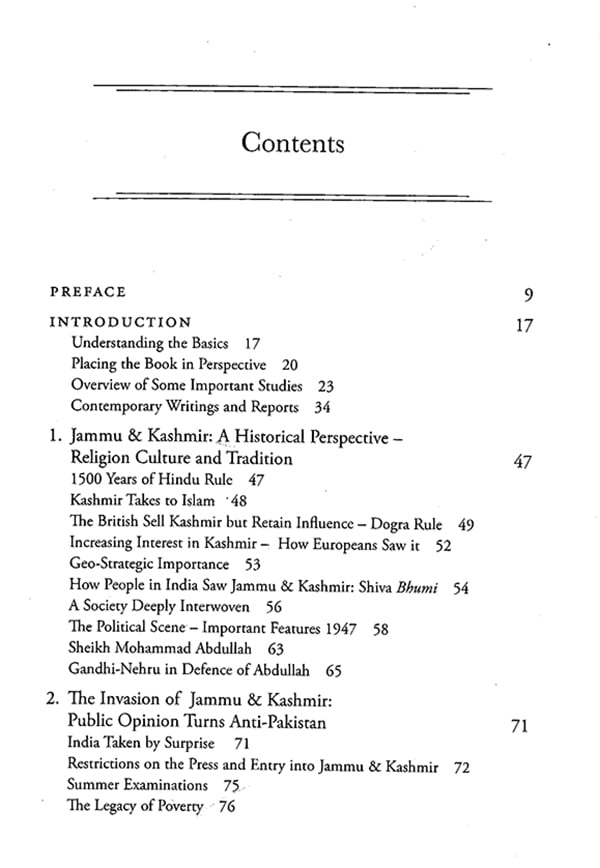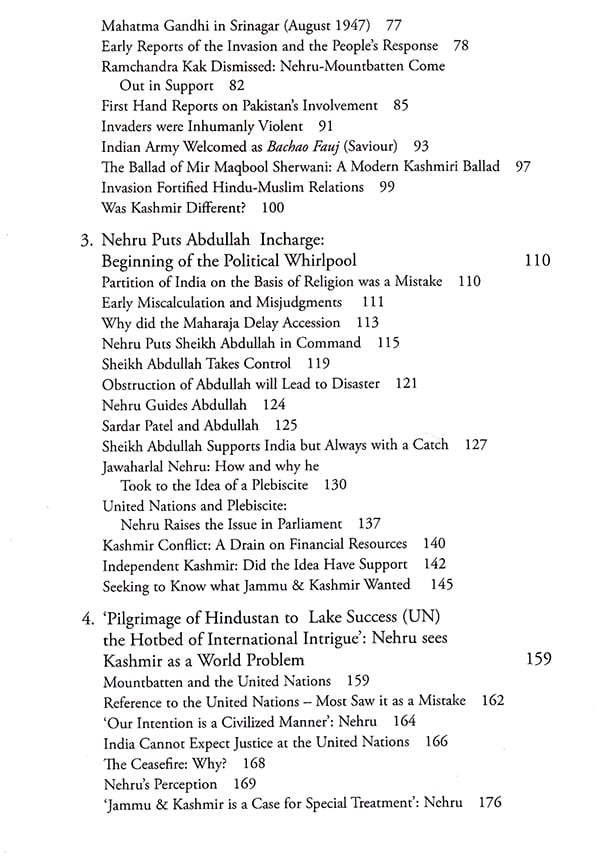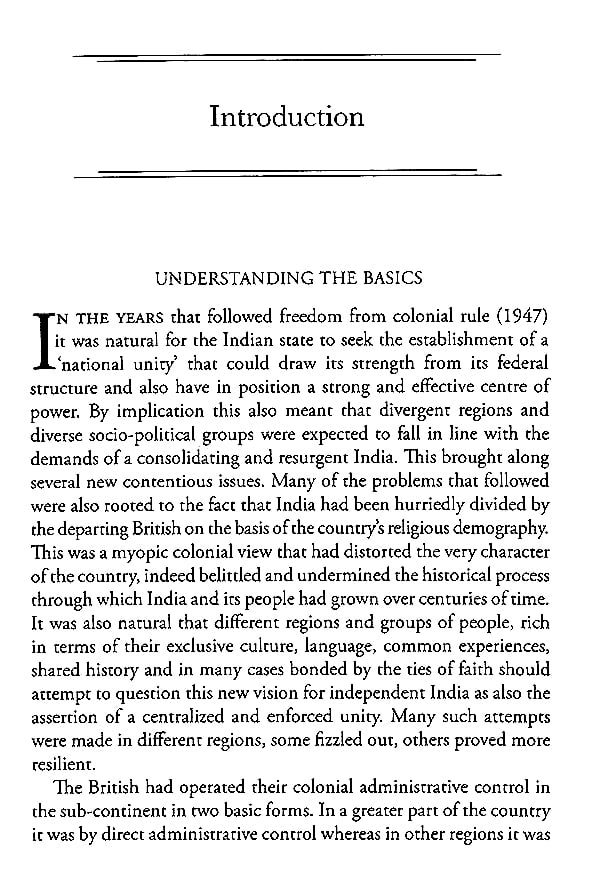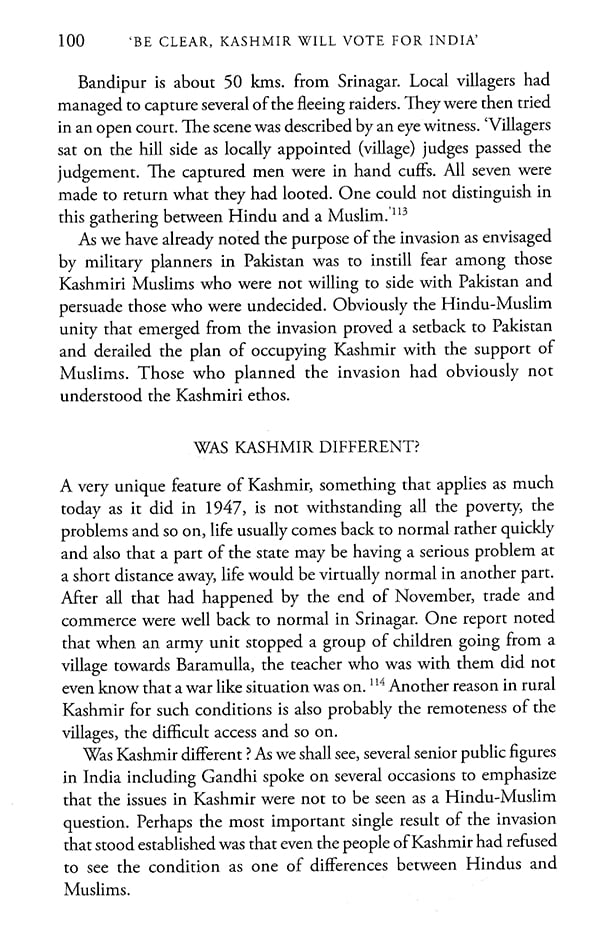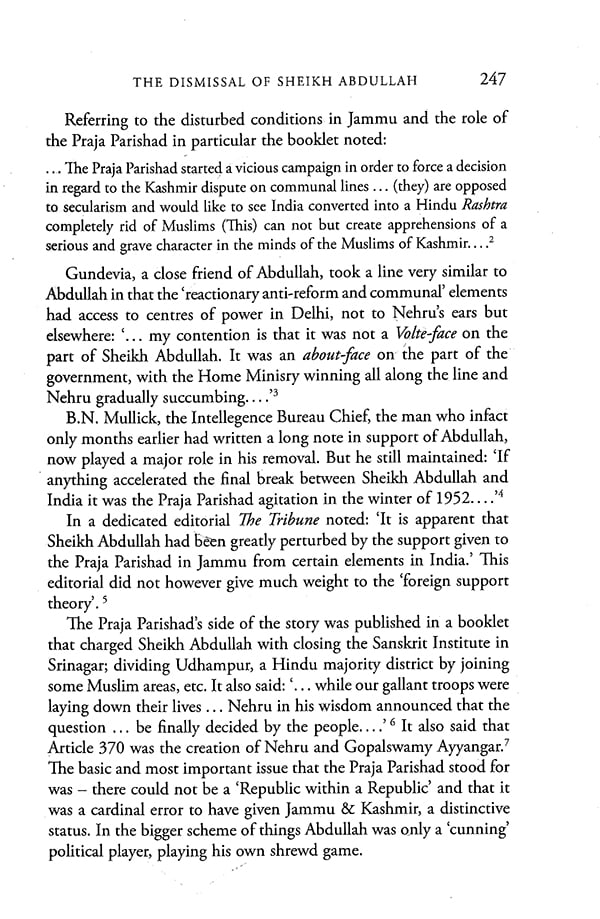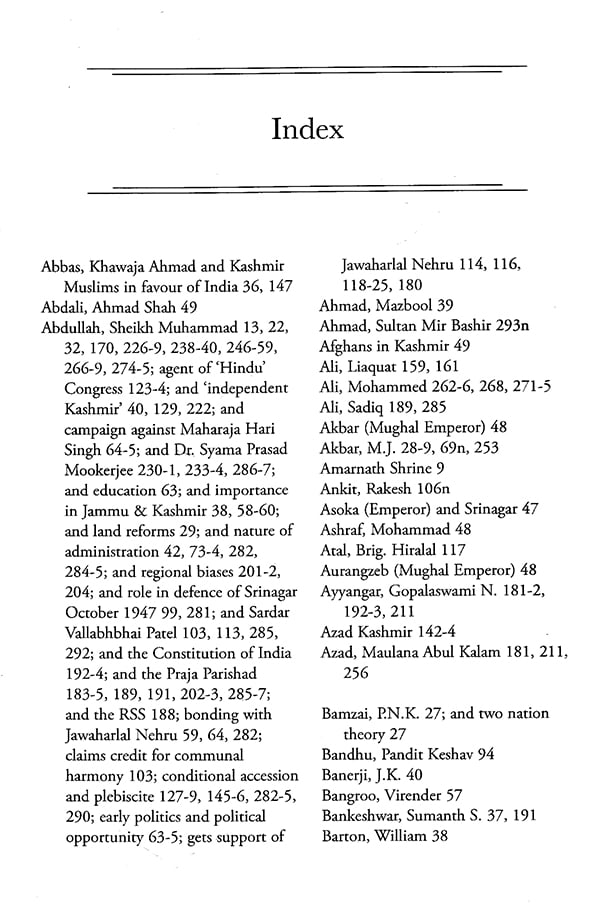
'Be Clear, Kashmir will Vote for India' Jammu and Kashmir 1947-1953 (Reporting the Contemporary Understanding of the Unreported)
Book Specification
| Item Code: | NAZ252 |
| Author: | Raghuvendra Tanwar |
| Publisher: | Manohar Publishers and Distributors |
| Language: | English |
| Edition: | 2019 |
| ISBN: | 9789388540186 |
| Pages: | 312 |
| Cover: | HARDCOVER |
| Other Details | 8.80 X 6.80 inch |
| Weight | 550 gm |
Book Description
The central point that this volume makes is that much of what happened in Jammu & Kashmir in the critical first few years (1947-53) needs a more careful reassessment. It is argued that there were little voices of ordinary people that should have been heard but were ignored. The political discourse that took centre stage even as it appeared more assertive and representative of mass public opinion was, however, as is now clear only a clever and misleading political move.
Much of the source material upon which the author has based his study has till now remained unstudied and uncited -rare hard to find books, pamphlets, articles in journals, magazines and newspapers, official and party reports and so on. The volume takes the reader back in time to a kind of ring side seat. Kashmir's cultural and historical legacy, the invasion, the issue of the plebiscite, the United Nations and the ceasefire, the Praja Parishad and most important of all the political scene and its key players - Prime Minister Nehru, Dr Syama Prasad Mookerjee and Sheikh Abdullah. Based on the nature of its sources the volume breaks free of a stereotyped approach to understanding the origin of what we commonly term today as the 'Kashmir problem'.
The volume argues that contemporary views recorded as they are in the heat of the moment with natural spontaneity often contain hidden lines and new light. Not surprisingly contemporary versions tell us a story very different from mainstream conventional writings on Jammu & Kashmir. This timely volume will radically influence the existing discourse on Jammu & Kashmir.
Raghuvendra Tanwar is Emeritus Professor and has taught modern history at Kurukshetra University for about thirty-nine years, superannuating as Senior Professor in 2015. He has also been the University's Dean Academic Affairs and Dean Social Sciences.
Tanwar's major publications are Reporting the Partition of Punjab: Press Public & Other Opinions 1947 (2006); Politics of Sharing Power: The Punjab Unionist Party 1923-47 (1999); Bansi Lal: Life & Times (co-author) (2012); Frankly Speaking: Essays and Opinions (2012).
He has been General President of the Punjab History Conference (2017) and the first President of the Contemporary Section of the Indian History Congress (2008). He was a National Fellow (Research Awardee) of the University Grants Commission (2002-5) and is also a Member of the Indian Council of Historical Research, New Delhi. M
MY WIFE AND I have been regular visitors to Kashmir for many many years now Quite often the thought of having a second home in Kashmir has crossed our minds, but with the law being what it is, this is obviously not possible. We have experienced the calm of Srinagar and its surroundings during long periods of peace and quiet and also seen it erupt at short notice. We were in Srinagar when the Amarnath land transfer agitation (June 2008) took place and were scheduled to return on the day following the incident. We had shifted for the last two days of our visit to the outskirts of the city with our close friends - the Khans. In view of the sudden disturbances our host decided that he would himself drive us to the airport, because the route involved passing through some of the most notorious stone throwing areas of Srinagar. Initially our hosts had thought of arranging a police escort, but interestingly this was considered a more dangerous option. The Khans were and are influential people, well known in the area and the chances of being targeted by the stone throwers were perhaps less. This proved to be a miscalculation. As we drove through dangerously fast, at several turns a small group of young men - mostly in their teens would suddenly emerge, throw their stones and disappear. Clearly there was an organized pattern. However dramatic this experience may have been, we soon got over it. What happened next is what remains etched in our minds.
**Contents and Sample Pages**